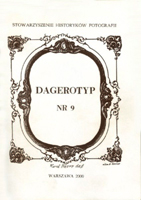Album zdjęć Jana Bułhaka ofiarowany przez Józefa Piłsudskiego Helenie i Ignacemu Paderewskim
An album of Jan Bułhak’s photographs presented to Helena and Ignacy Paderewski by Józef Piłsudski
Author(s): Wanda Mossakowska, Jolanta B. KucharskaSubject(s): Photography
Published by: Instytut Sztuki Polskiej Akademii Nauk
Keywords: photographic album; Polish photography; Bułhak; Jan; Piłsudski; Józef; Paderewski; Ignacy; Paderewska; Helena; photographic collection; photographic album; vintage photography; history of photography
Summary/Abstract: An album of Jan Bułhak’s photographs presented to Helena and Ignacy Paderewski by Józef Piłsudski In the autumn of 1919, Józef Piłsudski, the head of the Polish state, presented to Ignacy Paderewski, the famous pianist and the Prime Minister and Minister of Foreign Affairs, an album with photographs entitled „Lithuania” by the Vilnius photographer Jan Bułhak (fig. 1). On the second page of the album there is a hand-written dedication to Helena and Ignacy Paderewski, dated April 19, 1919 (fig. 3), in which Piłsudski thanked the Paderewskis for their understanding and political support during his military expedition to Vilnius in 1919. The album is in the possession of the Institute of Musicology of the Jagiellonian University in Cracow. The present article briefly considers the circumstances of the capture of Vilnius by the Polish army from the hands of the Bolsheviks during the military campaign in April 12-19, 1919 and Piłsudski’s stay in the capital of Lithuania between April 21 and 27 the same year. It also presents the correspondence between Piłsudski and Paderewski from that time. The authors analyse the album composed of forty-eight photographs arranged at random. The careless character of the album was due to the haste of its preparation and difficulties in obtaining photographic and bookbinding materials during the military campaign which had not finished in this area. The album contains fourteen photographs of Vilnius (fig. 4), two photographs of its vicinities (Kalwaria and Puszkarnia), as well as of numerous photographs of other localities, such as Nieśwież (Niaswiż; fig. 6) with a castle of the Radziwiłł family and Bohdanów an estate of the painter Ferdynand Ruszczyc (fig. 5). There arc also many photographs of landscapes and motifs of nature, so characteristic of the work of Bułhak, one of the most eminent Polish photographers. Digitalized and reedited material
Journal: Dagerotyp
- Issue Year: 2000
- Issue No: 9
- Page Range: 21-36
- Page Count: 16
- Language: Polish
- Content File-PDF

